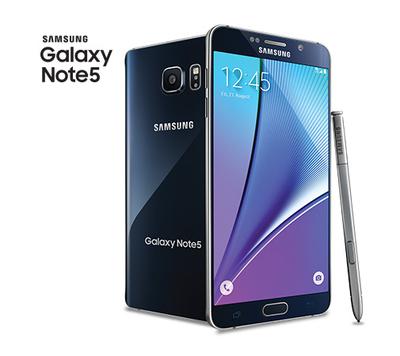

PHOTO:
Shutterstock
Chatbots have been used for a few years now for lead-gen and content marketing use cases. Brands have deployed both rule-based and AI-powered chatbots to share relevant content, set up demos, walk customers through sign-up and automate customer service workflows — all in an effort to deliver consistent, seamless experiences across channels and geographies.
But this barely scrapes the surface of what conversational chatbots can do. So what comes next for conversational AI (CAI)?
Embedding Conversational AI Into the Broader CX Strategy: Best Practices
Conversational AI solutions play a critical role in connecting the dots between various elements of customer experience (CX). But when deploying these solutions, brands must keep the focus on the journey across stages and channels, not the technology, said Tony Lorentzen, general manager and senior vice president, intelligent engagement at Nuance Communications, a CAI company recently acquired by Microsoft. “Marketers tend to forget about the transition from one channel to the next. If a user is interacting with a chatbot online and requests a call from a human agent, it’s reasonable for that user to assume the agent will have a history of the interactions with the chatbot. Unfortunately, this is not always the case. When embedding CAI solutions, brands must recognize how to create experiences that can transition seamlessly across channels by collecting and utilizing data from every interaction to inform future experiences.” That means connecting every channel (web, mobile, voice, chat, etc.) to a common pool of intelligence.
While that is the dream state for every marketer, a good starting point, said Saurabh Kumar, CEO of Rezolve.ai, an AI-powered employee helpdesk company, is to identify pain points (or drop-off points) where customers tend to get disengaged (in the journey) and evaluate whether CAI can help smooth out those transitions. The role of CAI, he said, is evolving from a point transaction tool (setup a demo meeting) to a cognitive assistant that wears different hats like customer success, product support, data analyst and more, through the customer lifecycle, using context and history as guideposts. “What may start as a simple lead capture/demo meeting setup can transition into onboarding, setup, initial user training, assistance with analytics and metrics, proactively surfacing unused features, and ongoing service. Each of these areas can be reimagined with CAI to deliver better experiences, reduce cost and increase satisfaction.”
Arun Bhattacharya, global VP of Product Marketing at Kore.ai, which automates conversational interactions, also cautions against trying to do it all at once. “Start with one channel like voice or text and expand deeper into your CX journey once you achieve ‘minimal viable success’. This is the only proven way to successfully proliferate conversational AI into your corporate-wide CX strategy.”
Related Article: Getting Started With Designing Conversational AI
Beyond Greeter-Bots: Emerging B2B Use-Case Opportunities
What makes CAI so attractive is its ability to impact not just efficiency and productivity but also revenue and profitability.
With the anything-as-a-service subscription economy poised to grow, retention, renewal and growth are key. While great customer service helps with retention, growth needs more proactive interventions. CAI can help here, especially when it supports contextual understanding for smart cross-selling, upselling and retention, said Bhattacharya. “The value of conversational AI goes far beyond just conversing with the customer. Collecting data such as usage and profiles across all delivery channels to build contextual understanding across voice, text and chat is a central emerging use case driven by the increasingly omni-channel nature of B2B marketing.” Other growth areas include channel partner management and community management processes, as well as market expansion via conversational AI that makes it possible to interact in multiple languages.
Kumar believes that driving platform adoption, a leading indicator of retention, offers high innovation opportunities and usefulness in the conversational AI realm. “Just-in-time microlearning while the user is in the flow of work is a great application. For example, while using a new SaaS platform, a user asking ‘How do I build this report’ can trigger a 5 minute ‘morsel’ of training on how to build reports.” Such applications can greatly reduce the admin overhead of B2B platform management and drive user productivity.
Related Article: Conversational AI Needs Conversation Design
Getting Your Organization Ready for Conversational AI
Much as B2B marketers would like conversational AI to be plug-and-play, a set of surrounding processes and capabilities need to be in place for it to pay off in a reasonable period of time.
Organizations need to have the data readiness to build real-time CAI models. Data-driven organizations see faster time-to-value from CAI, according to Roeland Jimenez, founder and CTO of Wave5, a data analytics and CAI firm. “All departments within an organization should be data suppliers to the rest of the organization. This needs an accessible data platform with strong data governance and transparency.” Unfortunately, data remains a challenge for CX in general. “Most large companies have disparate data sources and would require a project in itself to integrate the proper data sources,” said Nuance’s Lorentzen.
Having clarity on available internal skills and resources, he added, will help determine the kind of product, partner and services needed to make the deployment a success. When it comes to conversation design readiness, Bhattacharya recommended hiring linguists as well as people with a creative writing background. “Conversation design is much like imagining many variations of the same basic scene in a play, without necessarily knowing the motivation of one of the actors. Building a bot with only traditional IT folks is not going to cut it (and I say that as one!).”
Connecting the data and processes with APIs to let AI build context is another challenge. “Successful understanding of conversation is greatly increased by being able to apply user specific context to it. No conversation happens in a bubble, there is always some previous interaction or implied context (time, location, environment) that needs to be applied. A user is going to assume that the bot is fully aware of their situation — which is what APIs enable — just like we do in human to human conversation.”
Ultimately, argued Kumar, marketers must challenge conversational AI to do things for the user — not just answer questions. That means providing it with history and context, regardless of channel.
Conversation — Whether Human or AI — Is a Mixture of Art, Science and Context
The possibilities with conversational AI seem endless. Marketing leaders will focus on balancing machine and human elements when designing and delivering stand-out conversation-led experiences through the customer’s lifecycle. But first we need to accept that conversations are a mixture of art, science and context.
“It is impossible to conceive of everything a user might say or to perfectly understand everything,” said Bhattacharya. “But the point of CX is not to be perfect, it is to conduct transactions on a user’s terms and not a designer’s singular view. There is no one right answer.”




![WordPress Coupon Code 2024 [64% OFF Code ????] Live](https://bloggerspassion.com/wp-content/uploads/2024/04/wordpress-coupon-code.jpg)

